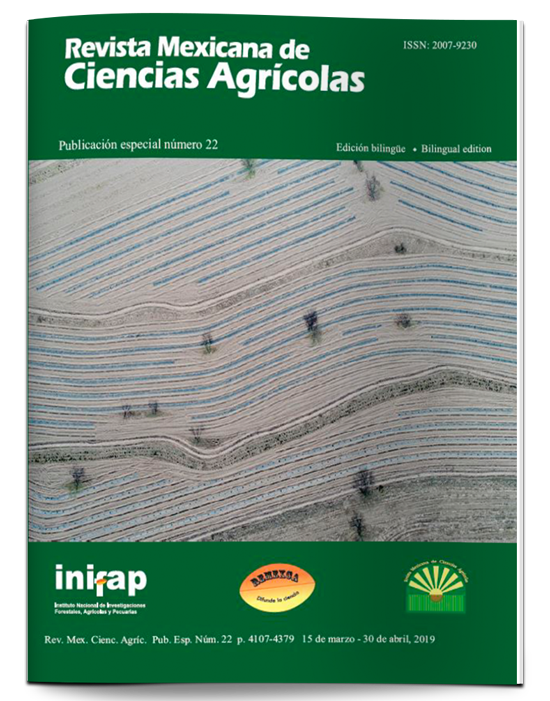Birds in agricultural systems with conservation tillage in northern Mexico
DOI:
https://doi.org/10.29312/remexca.v0i22.1856Keywords:
abundance, behavior, habitatAbstract
In Mexico, the creation of new agricultural areas causes the loss of bird species. To know the role of farming systems with zero conservation tillage-live fence (ZCT-LF) to maintain diversity-habitat use by birds, during June-September 2011, a bird monitoring was conducted in central Mexico. Species richness was analyzed with Jacknife1, the similarity with Sorensen, Conglomerates; abundance with log-normal model, c2; the diversity with Shannon-Wiener; and possible differences in these parameters with Kruskal-Wallis. Habitat use in the vertical (substrates)-horizontal planes (layers) was inferred with the frequency of observation (FO) and Poisson regression (ARP). The average results of Jacknife1 for UE’s were 38.7%, Sorensen 31%, a cluster with three subamalgamations (minimum, e= 2.7, maximum, e= 3.6) was formed; Lognormal (c2= 130.09, Y= 0.3518, 3 dof), c2 (P-value = 0.028); Shannon-Wiener H’= 2.99; Kruskal-Wallis P-value = 0.0248, 0.028, 0.4232, respectively. The FO suggest that the higher layer-substrate was most used (46.15%) - flight (27.95%); The ARP for layer, behavior, sex, age, substrate suggests that 2, 4, 1, 2 and 6 variables had significant coefficients. Mexico faces the problem of opening land to agriculture, arid and semiarid areas do not escape this phenomenon; therefore, the ZCT-LF systems are an option to maintain and preserve the avifauna.
Downloads
Downloads
Published
How to Cite
Issue
Section
License
The authors who publish in Revista Mexicana de Ciencias Agrícolas accept the following conditions:
In accordance with copyright laws, Revista Mexicana de Ciencias Agrícolas recognizes and respects the authors’ moral right and ownership of property rights which will be transferred to the journal for dissemination in open access. Invariably, all the authors have to sign a letter of transfer of property rights and of originality of the article to Instituto Nacional de Investigaciones Forestales, Agrícolas y Pecuarias (INIFAP) [National Institute of Forestry, Agricultural and Livestock Research]. The author(s) must pay a fee for the reception of articles before proceeding to editorial review.
All the texts published by Revista Mexicana de Ciencias Agrícolas —with no exception— are distributed under a Creative Commons License Attribution-NonCommercial 4.0 International (CC BY-NC 4.0), which allows third parties to use the publication as long as the work’s authorship and its first publication in this journal are mentioned.
The author(s) can enter into independent and additional contractual agreements for the nonexclusive distribution of the version of the article published in Revista Mexicana de Ciencias Agrícolas (for example include it into an institutional repository or publish it in a book) as long as it is clearly and explicitly indicated that the work was published for the first time in Revista Mexicana de Ciencias Agrícolas.
For all the above, the authors shall send the Letter-transfer of Property Rights for the first publication duly filled in and signed by the author(s). This form must be sent as a PDF file to: revista_atm@yahoo.com.mx; cienciasagricola@inifap.gob.mx; remexca2017@gmail.
This work is licensed under a Creative Commons Attribution-Noncommercial 4.0 International license.



